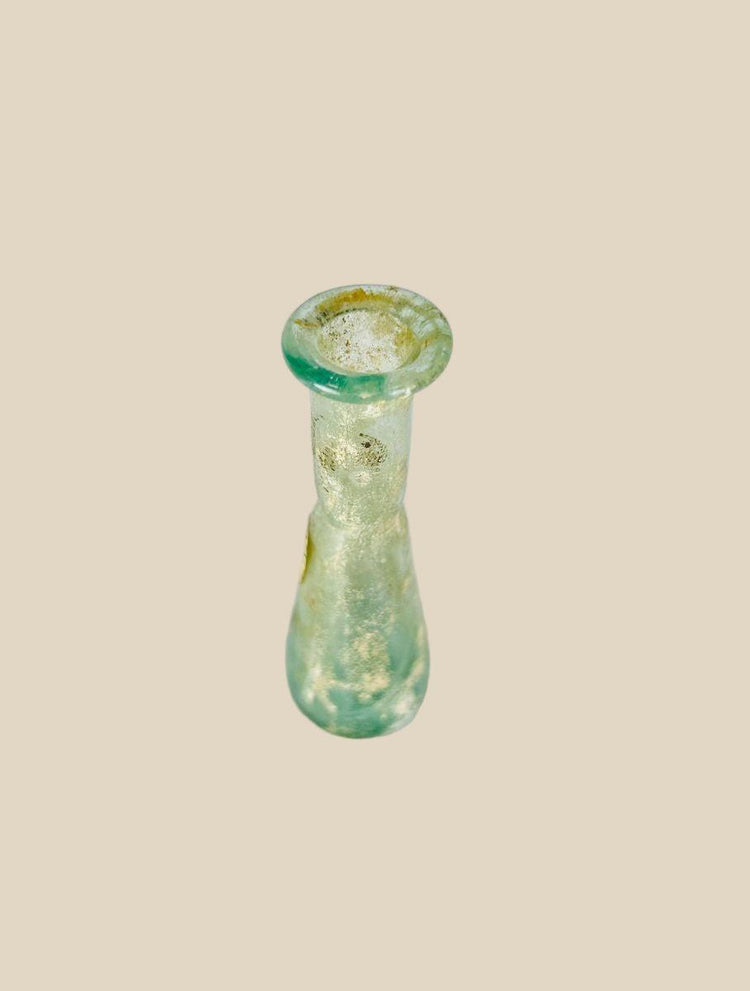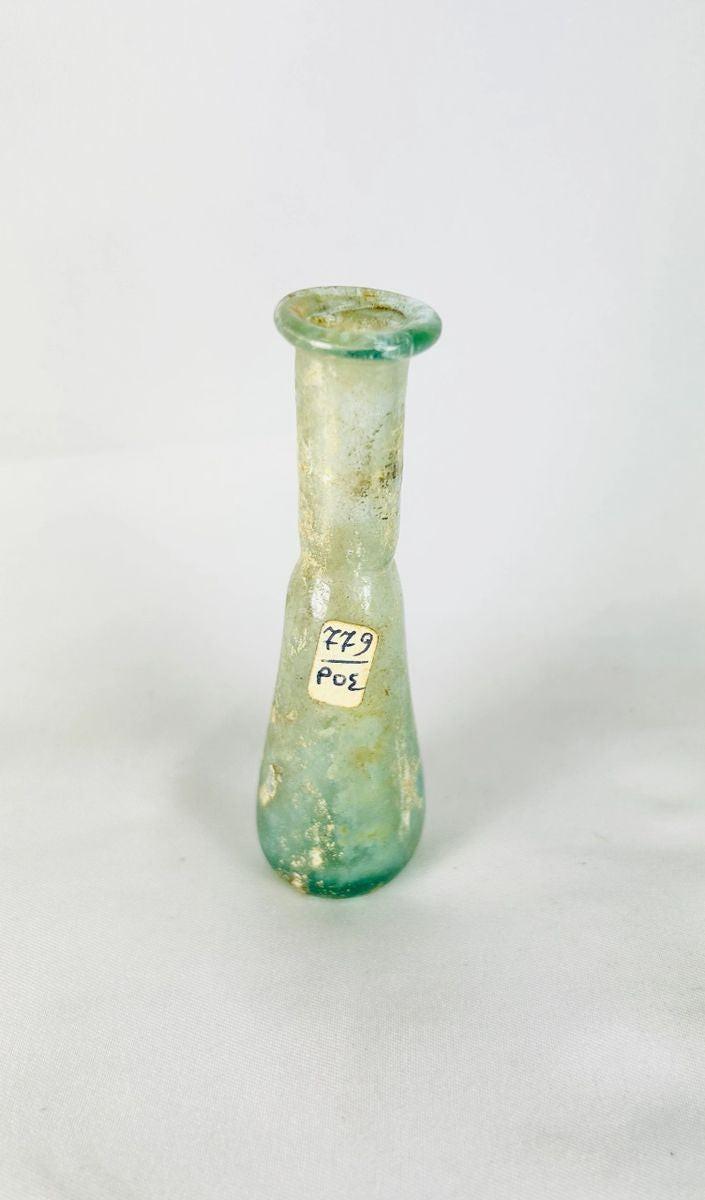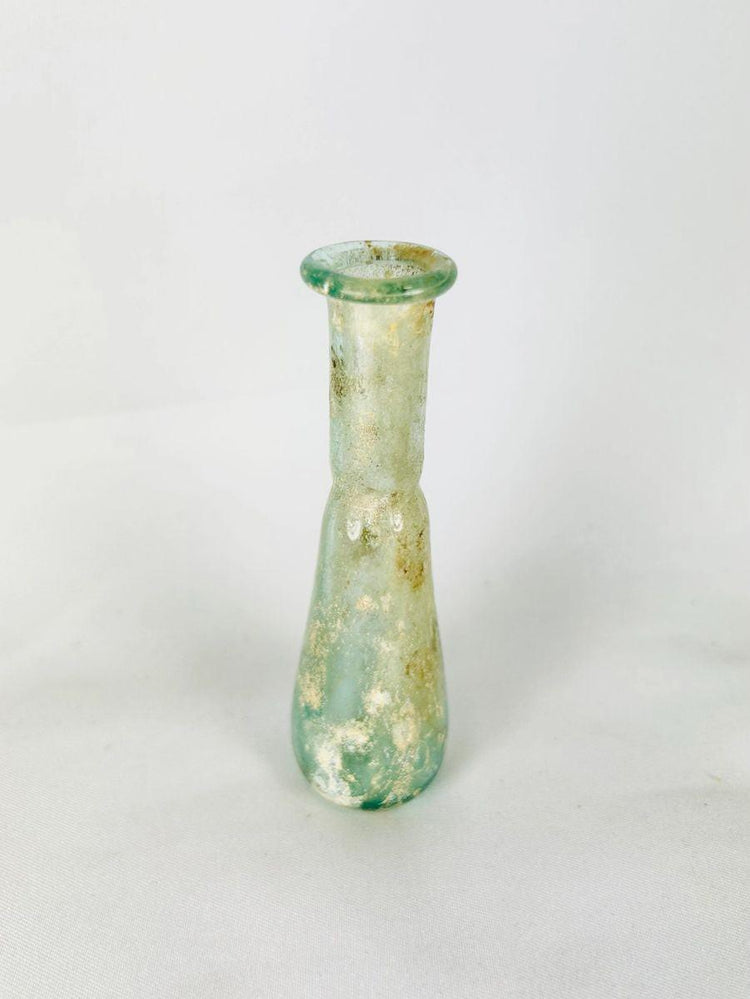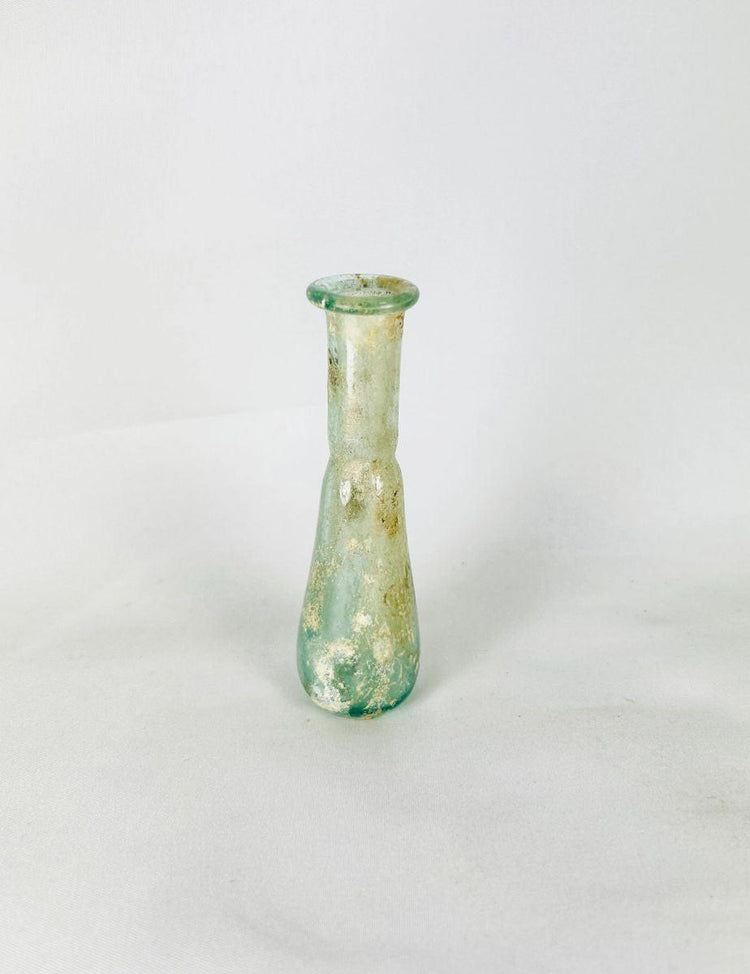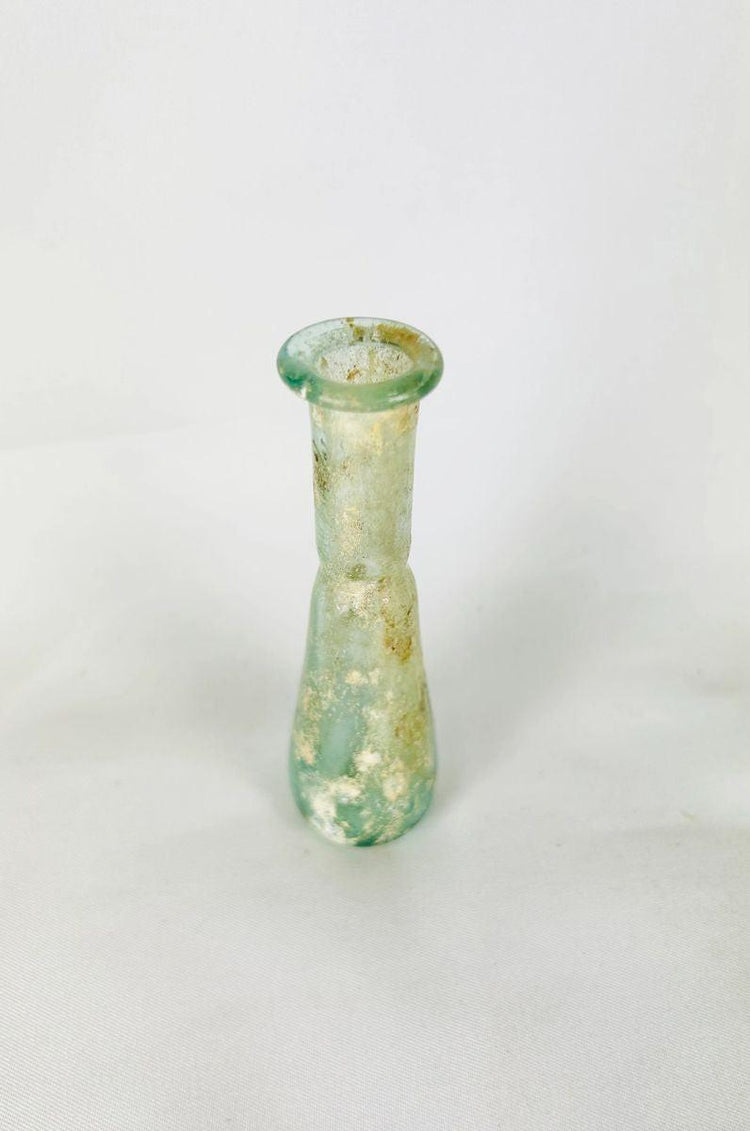Vase en verre romain antique | Récipient à parfum ou à cosmétique soufflé à la main | Ier-IVe siècle apr. J.-C.
Description
Plus
Moins
Contexte historique et origine
Région : Empire romain
Matériau : Verre soufflé
Période : 1er siècle avant J.-C. – 4e siècle après J.-C.
Description
Cette bouteille romaine en verre, finement conservée, a été soufflée à la main à l'apogée de l'innovation verrière romaine. Probablement utilisée pour contenir des onguents, des parfums, des médicaments ou des cosmétiques, elle présente un col cylindrique allongé se terminant en un corps conique arrondi, avec un petit bord plat et pulvérisé replié vers l'intérieur pour plus de solidité et un versement contrôlé. Sa délicate translucidité, ses imperfections naturelles et la présence de son étiquette archéologique d'origine témoignent de son authenticité et de son ancienneté.
Caractéristiques
- Col cylindrique allongé avec corps conique arrondi
- Bord plié projeté pour renforcement et coulage
- Soufflé à la main avec des bulles et des imperfections naturelles
- Étiquette archéologique originale et numéro confirmant la provenance
Importance culturelle
Les onguentaires comme celui-ci étaient essentiels à la vie quotidienne romaine, reflétant l'importance de l'hygiène personnelle, du luxe et du commerce. La verrerie romaine était révolutionnaire, remplaçant les récipients en métal et en céramique par du verre léger, fonctionnel et élégant. Ces petites bouteilles circulaient largement dans tout l'empire, servant à la fois de contenants pratiques et de symboles de richesse et de raffinement.
Condition
Excellent état pour son âge, avec une surface légèrement brillante et une légère usure due à l'enfouissement et aux manipulations. Numérotation archéologique intacte.
Dimensions (approximatives)
Hauteur : 4 po
Âge
1er siècle avant J.-C. – 4e siècle après J.-C.
Description
Contexte historique et origine
Région : Empire romain
Matériau : Verre soufflé
Période : 1er siècle avant J.-C. – 4e siècle après J.-C.
Description
Cette bouteille romaine en verre, finement conservée, a été soufflée à la main à l'apogée de l'innovation verrière romaine. Probablement utilisée pour contenir des onguents, des parfums, des médicaments ou des cosmétiques, elle présente un col cylindrique allongé se terminant en un corps conique arrondi, avec un petit bord plat et pulvérisé replié vers l'intérieur pour plus de solidité et un versement contrôlé. Sa délicate translucidité, ses imperfections naturelles et la présence de son étiquette archéologique d'origine témoignent de son authenticité et de son ancienneté.
Caractéristiques
- Col cylindrique allongé avec corps conique arrondi
- Bord plié projeté pour renforcement et coulage
- Soufflé à la main avec des bulles et des imperfections naturelles
- Étiquette archéologique originale et numéro confirmant la provenance
Importance culturelle
Les onguentaires comme celui-ci étaient essentiels à la vie quotidienne romaine, reflétant l'importance de l'hygiène personnelle, du luxe et du commerce. La verrerie romaine était révolutionnaire, remplaçant les récipients en métal et en céramique par du verre léger, fonctionnel et élégant. Ces petites bouteilles circulaient largement dans tout l'empire, servant à la fois de contenants pratiques et de symboles de richesse et de raffinement.
Condition
Excellent état pour son âge, avec une surface légèrement brillante et une légère usure due à l'enfouissement et aux manipulations. Numérotation archéologique intacte.
Dimensions (approximatives)
Hauteur : 4 po
Âge
1er siècle avant J.-C. – 4e siècle après J.-C.
Vous aimerez peut-être aussi


















